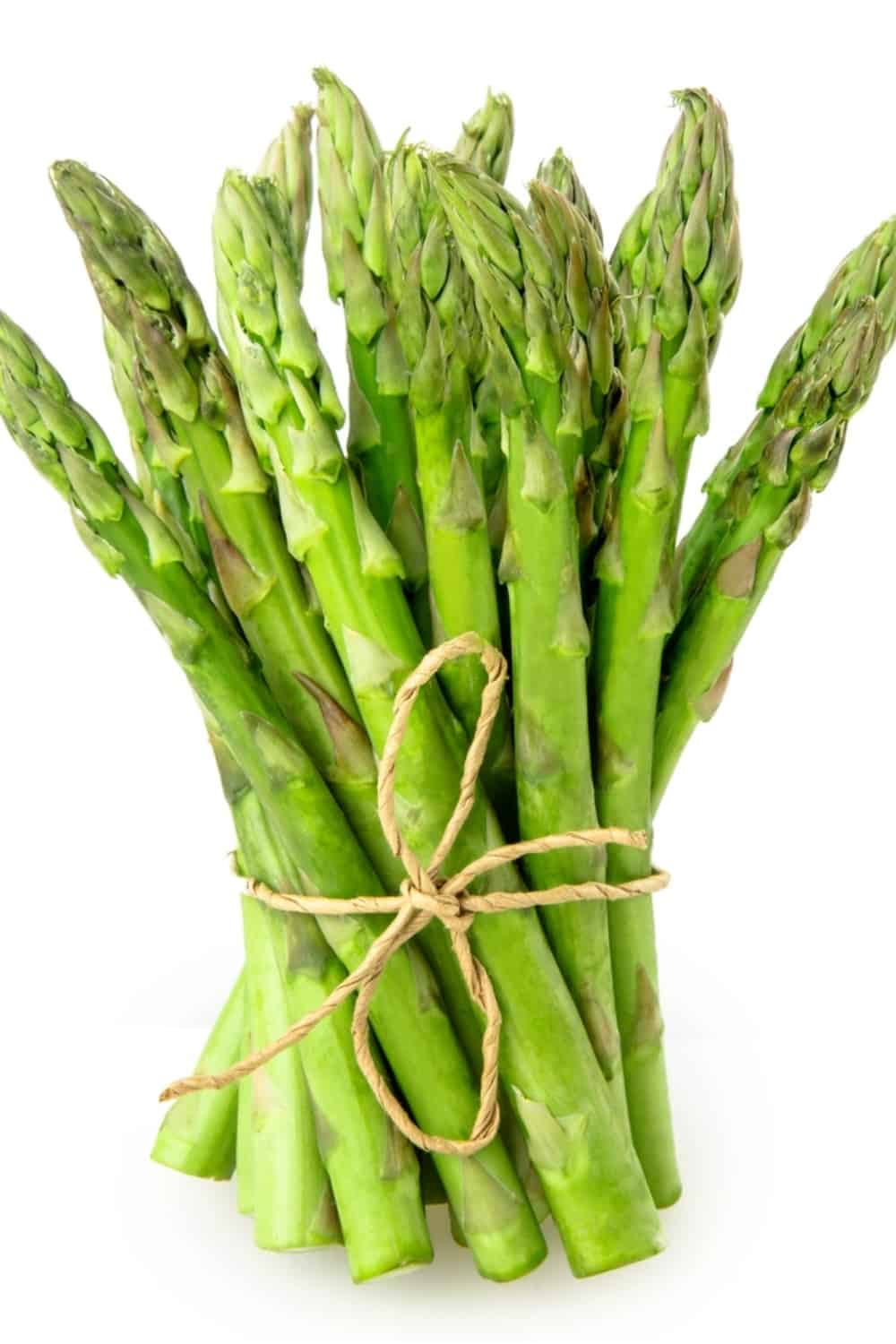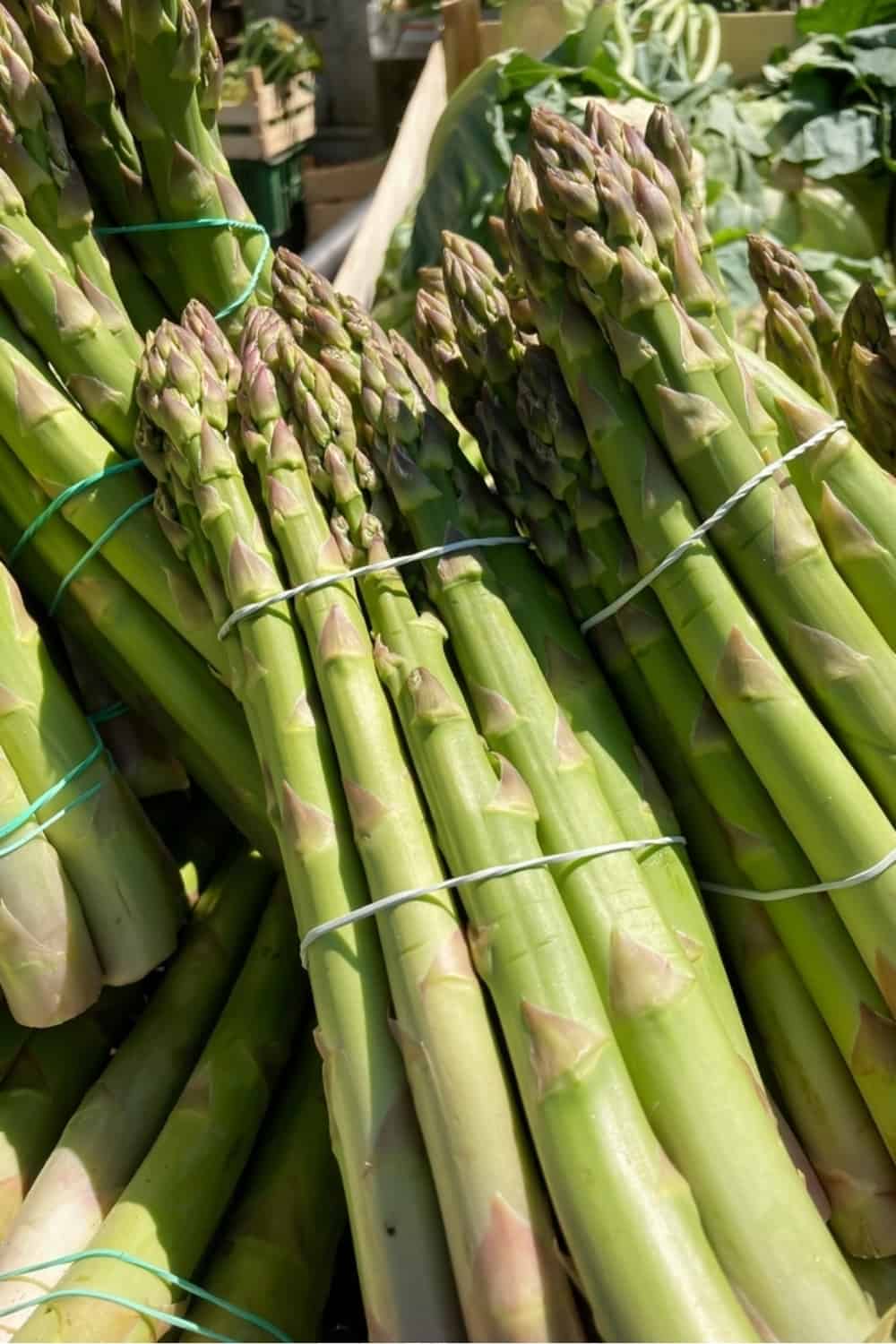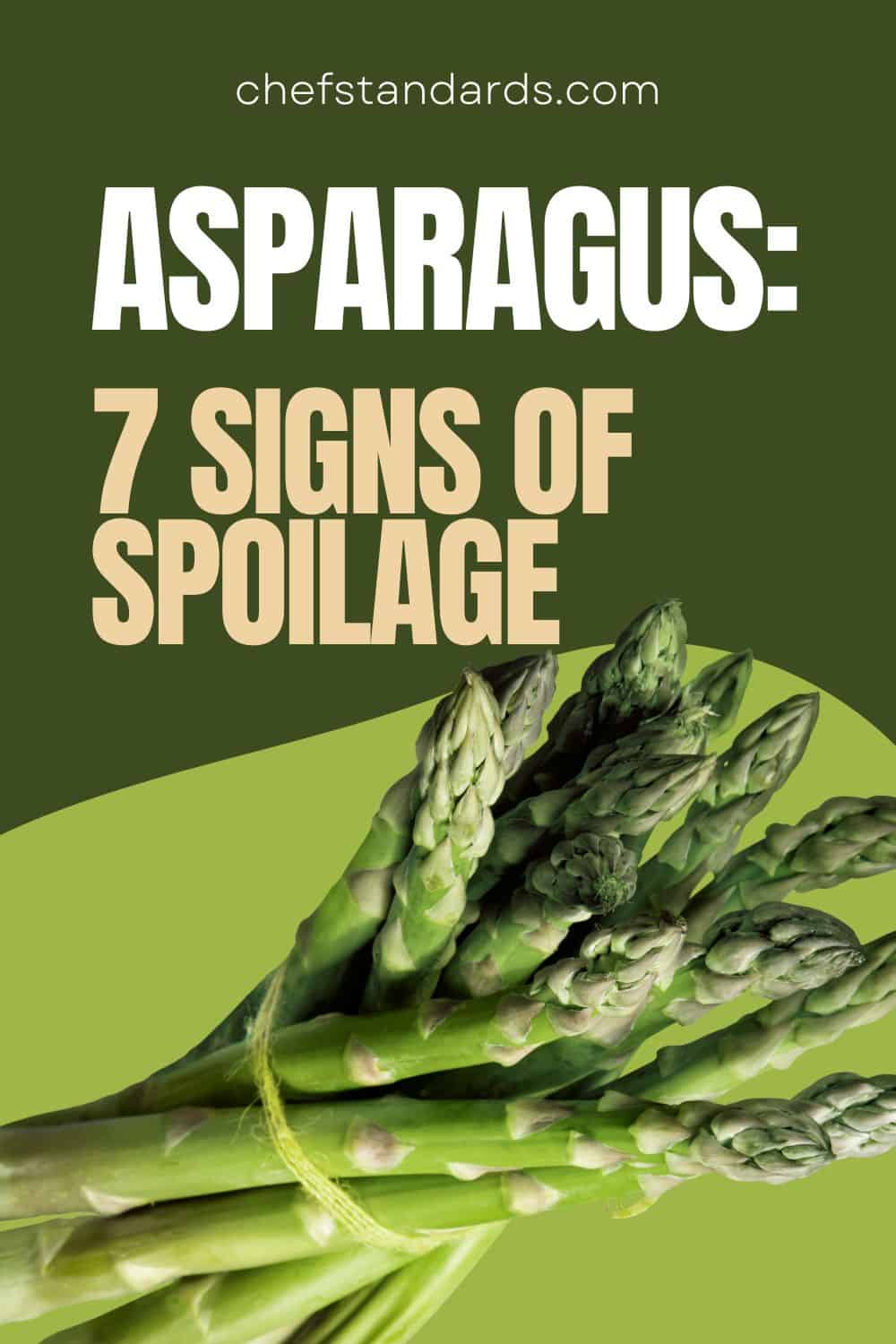The spring has come and, with it, some colorful and healthy veggies that are waiting for you to pick them from the shelves of your local grocery store or farmers market.
One of the main stars of this time of the year is certainly one green veggie known as asparagus.
But just like it is the case with any other type of vegetable or food in general, asparagus doesn’t last forever and it needs proper handling. The tricky thing is the fact that they don’t have a specific expiration date.
In order to avoid possible ugly problems with consuming spoiled food, it is important to know how to tell if asparagus is bad and the main signs of bad asparagus are discussed in this article.
1. Tips Turn Dark Green Or Black
When you pick fresh asparagus, it will appear in its nice green color and that counts for most of its parts, including tips which are considered their best part, by the way.
However, those tips can sometimes become darker in color or even black to some extent.
This can occur for a variety of reasons, including plant genetics and the harvesting process, but the most common reason is environmental factors.
This actually means that the asparagus has been exposed to some unwanted external conditions, like too much sunlight or even colder temperatures, i.e. bad storage conditions.
If this happens, the tips of your asparagus are spoiled and they are no longer suitable for consumption.
Tips are actually the first victims of spoilage, so they can be cut off and you can use other parts of the vegetable, of course, if the discoloration is limited only to that one part.
2. Your Asparagus Spears Are Getting Limp

At first sight, everything is okay and you think that you can freely enjoy your asparagus however you want.
But once you touch it, you notice that something isn’t right, i.e. your asparagus is limp on the touch.
Why did this happen and what can you do? First, limp asparagus is mainly the consequence of poor storage conditions. Namely, asparagus should be stored in the fridge, ideally at a temperature of around 32°F to 36°F (0°C to 2°C).
If the temperature is too high or too low, it can cause the asparagus to lose its moisture and become limp. Aside from that, if they are exposed to air for too long, especially in a dry environment, they will also become limp.
Finally, asparagus is a perishable food and it loses moisture as it ages, consequently becoming limp and that is another cause.
So what can you do? Can you consume limp asparagus? Well, consuming limp asparagus won’t do any harm to your health, but it will taste nasty, so I wouldn’t recommend you to eat it raw.
The best thing you can do is to cook it or incorporate it into the soup or stew, and you can also roast it if you like it that way.
3. Asparagus Stalks Begin To Be Wrinkled
I saw wrinkles on the asparagus many times and that is actually a natural process that occurs when you don’t consume them at the right time.
So you can easily conclude that the main cause of wrinkled asparagus is their natural aging process.
However, as is the case with limp asparagus, poor storage conditions, and too much air can make them wrinkled as well.
And you can also find wrinkled asparagus when you buy it because it has been mishandled during shipping or storage, or has been frozen and improperly thawed (due to the water content expanding and contracting during the process).
Fortunately, wrinkled asparagus is not entirely useless.
I would avoid steaming because they tend to become too soft to be enjoyable in that process.
Also, I wouldn’t recommend you to eat them raw, but you can certainly incorporate them into some dishes like soups or stocks and even roast them.
4. Yellow Asparagus Is Not A Good Asparagus

Although you may think that yellow asparagus is something natural because there are so many yellow fruits and veggies after all, I have to disappoint you because this color is not a good indicator.
Asparagus can turn yellow because of a few reasons and one of them is overcooking. However, that is not a problem because it won’t endanger your health, although it can do that to your taste buds.
But, yellow asparagus can be a direct consequence of disease or severe damage. Damage can be caused by pests and we all know what the consumption of those nasty creatures can do to us.
Aside from that, the fungal disease can also cause yellow spots on the vegetable.
So, if you notice that your favorite veggie is yellow or any yellow spots on its surface, it is best to throw it in the trash to stay on the safe side.
5. Mold Is Always A Bad Sign
When you read these types of articles, there is a high probability that you will notice a part that states mold. Molds on food is probably the biggest spoilage sign in general and asparagus is not an exception.
There are a few factors that contribute to mold growth on asparagus. First, every asparagus will become moldy after some time, so it is important to consume it as soon as possible if you don’t want to throw it in the trash.
Also, mold can appear due to poor storage conditions, i.e. if the asparagus is exposed to too much moisture, which creates a suitable environment for mold growth.
Finally, damage to any part of asparagus can increase the risk of mold growth. Namely, when asparagus is damaged or cut, its internal flesh releases moisture and is exposed to air, which can be ideal for mold growth.
All in all, no matter how the mold growth occurred, the best thing you can do is to get rid of moldy asparagus, as mold can produce toxins that can be harmful to your health.
6. The Smell Is Somewhat Strange

Besides mold, the bad smell is also one of the major indicators of spoilage for many types of veggies, like for example squash, and for our asparagus of course.
Bad smell is mainly related to some other signs of spoilage previously mentioned, i.e. when asparagus becomes moldy or discolored, it will probably take on a bad smell.
You have to know that fresh asparagus mainly has a somewhat neutral smell, with a slightly sweet aroma and a hint of grassiness.
However, once it spoils, it takes on a musty or moldy odor, which is often a sign of mold or bacterial growth. And you all know how toxic mold and bacteria can be to your body.
So, if you sense any bad smell when pursuing asparagus, it is essential to get rid of it immediately because you don’t want to develop food poisoning or some kind of food-borne illness.
7. The Flavor Is Not What You Expected
Finally, if you are not sure of these previously explained spoilage signs, you can taste a bite of your asparagus and conclude whether or not it is bad.
Once you bite it, if it has a mildly sweet and slightly nutty flavor, you can freely swallow it and continue enjoying the rest of it if you want.
However, if it tastes unpleasant in any way, I wouldn’t recommend you to continue eating it.
Namely, asparagus can develop a sour and tangy taste if it has been exposed to air and moisture for too long due to mold that can develop easily.
Aside from that, if it has been stored at too high of a temperature, it can start to ferment and produce a bitter or acidic flavor.
Although the risk of health issues depends on the stage of these processes, it is best to discard asparagus if you notice any off-flavor in order to be 100% safe and sound.
Best Way To Avoid Ending Up With Bad Asparagus: Pick The Right Ones

You now know what are the main signs of bad asparagus, but isn’t it ideal to avoid ending up in this situation eventually? Well, it certainly is and the best way to achieve that is to pick good asparagus in the first place.
So here are some tips for you in order to do that right.
• Take a look at tips first because they are the most valuable part of asparagus; make sure that they are firm and unwilted.
• Also, in the case of fresh asparagus, tips should be tightly closed, so pay attention to that as well.
• Bring your nose closer to asparagus to determine its smell because asparagus that is past its prime get smelly fast.
• Take a look at stalks; if they are plump and firm, you are good to go.
• Make sure the color of the asparagus is not faded; the color of fresh asparagus should be bright green.
• Look for the asparagus that is chilled, i.e. stored in a cold place, or for those that are standing upright in cold, fresh water.
• Try to find same-size stalks or, if you are buying in the farmers market, ask the seller to put together a bundle of stalks that are the same in size.
• Finally, buy asparagus in season (peak months are in April and May) for the freshest version and best prices.
What Is The Best Way To Store Asparagus To Avoid Spoilage?

Once you buy fresh asparagus, you need to store them properly to keep them fresh. The best way to store asparagus is to refrigerate it. You can refrigerate fresh asparagus and cooked ones. Below, I will show how to do that in both situations.
Fresh Asparagus
First, you need to be aware that asparagus, unlike some other foods like grapes, likes a humid environment. That is what the proper storage of this food is based on. Based on that fact, there are 2 ways to store your fresh asparagus in the fridge.
1. Damp paper towel: First, your store-bought asparagus bunch comes with a rubber band. Do not remove it because it will help you to secure the spears.
Second, since it is good for your asparagus to be in a damp environment, it is best to leave it in a half-open plastic bag. Now, you can wrap your asparagus stalks in a wet paper towel and put them in the fridge.
This is an excellent way to store your asparagus in the fridge for about a week. But, there is an even better way to store it, which I will explain below.
2. Glass of water: An even better way to store asparagus in the fridge is to put it in a glass with an inch of water. You can also place it in a jar or airtight container and pour a little water into it just to fill the bottom.
All you have to do is first cut the bottom of the stalks.
Once you do that, you will place the asparagus upright in the container and loosely cover the top of the stalks with a plastic or freezer bag. Do not close it entirely because the vegetable still needs some air circulation to keep fresh.
Check the water frequently and change it if it gets cloudy.
If you do all of this, your asparagus will stay fresh in the fridge even longer, i.e. for about 2 weeks.
Cooked Asparagus
You can also refrigerate your cooked asparagus. In order to do that the proper way, make sure that you don’t cook it in boiling water. Make sure that the cooked spears keep their crispy texture by blanching them. You can also roast or steam them.
After it has been cooked properly, let it cool to room temperature for up to 2 hours. After that time frame, you must transfer the asparagus to an airtight container or glass jar that has to be tightly sealed.
Finally, you can store the container or jar in the fridge and your cooked asparagus will be safe for eating for the next 3-4 days.
You can also freeze your cooked asparagus and that process is as simple as it gets. You just need to divide it into meal-sized portions, transfer each part into its airtight container, and put the container in the freezer.
How Long Do Asparagus Last Based On The Storage Conditions?
There is no exact spoilage date of asparagus. The time frame in which your asparagus will last mainly depends on the way you store them. That also depends on the condition they were in when you bought them.
But, here, we will assume that you bought asparagus in good condition and stored it according to the rules explained above.
Based on that, the table that represents the shelf lives of asparagus in various conditions is presented below.



